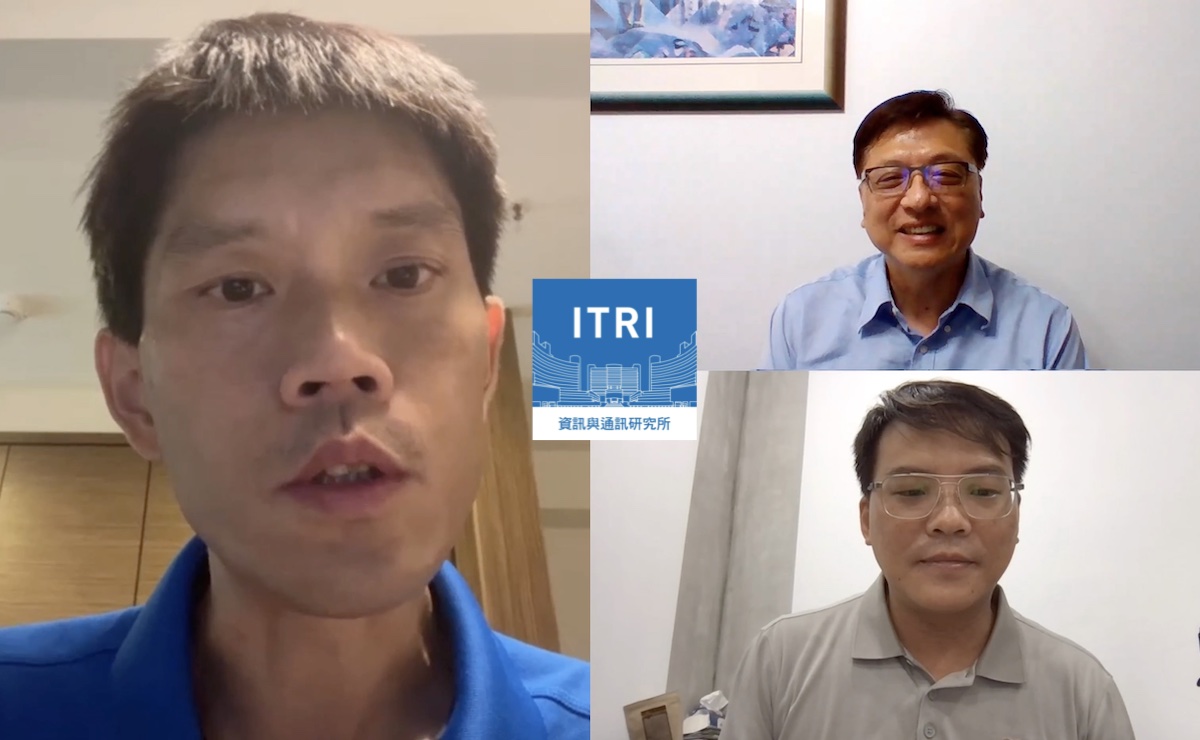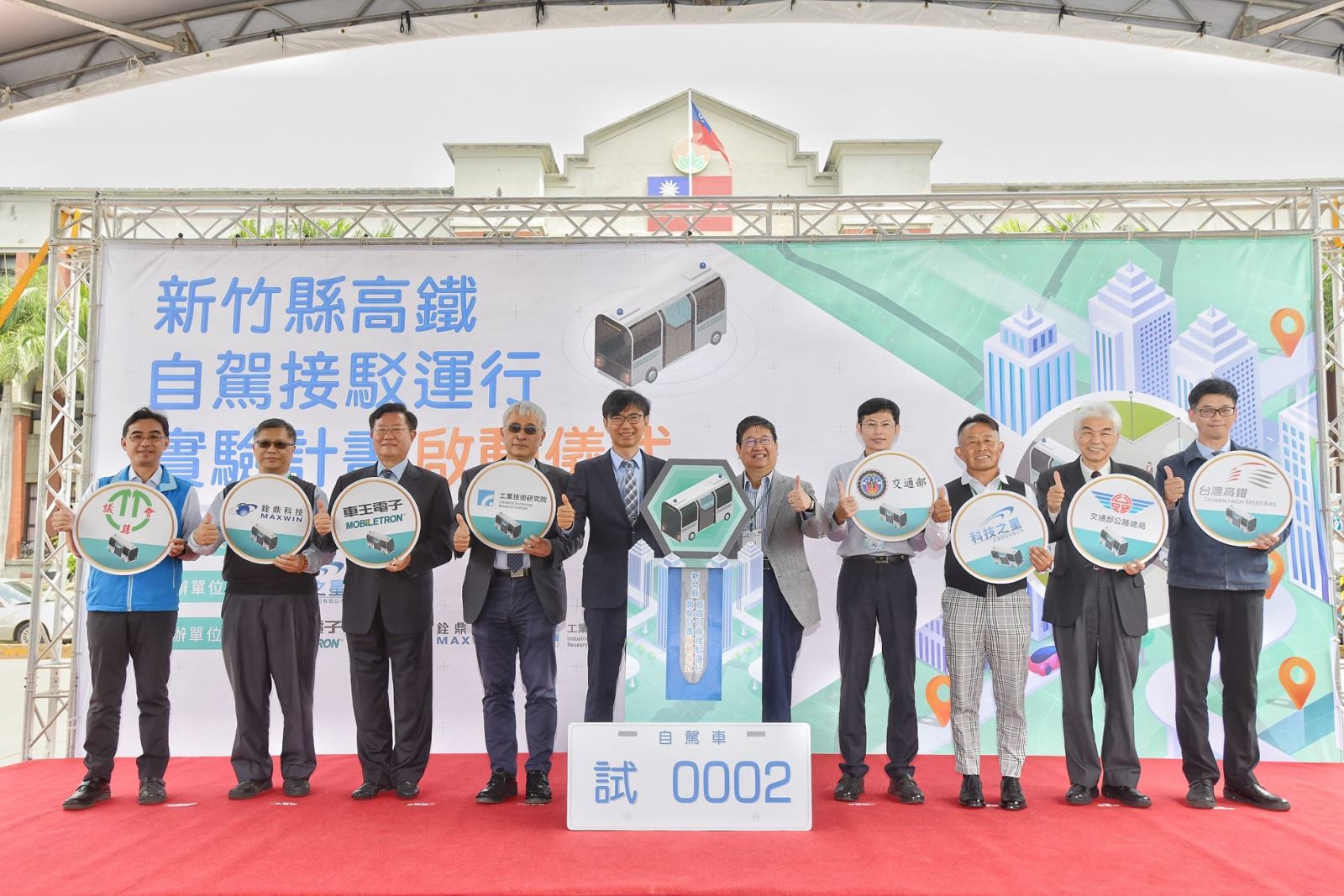News including the road tests, the pilot run of logistics, and ride-hailing service in urban areas regarding autonomous driving vehicles had influenced the timetable of future strategies of the decision makers in the industry, as the autonomous driving technology became the most important R&D topic among IT industry and traditional major carmakers. Taiwan, which owns mature IT industry, has joined the competition of autonomous driving technology since the first test driving license plate for autonomous driving vehicles issued by MoTC two years ago. In the morning of June 9th, editors of Auto Future online interviewed with Michael Li, the director of the Information and Communications Research Laboratories, ITRI, to understand the status quo of the autonomous driving sensor system developed by that laboratory for four years, and shared the next step of commercialization.
 Michael Li, Director of Information and Communications Research Laboratories, ITRI (Left) and Jeff Lee (Top Right), Seven Tseng (Lower Right) , editors of Auto Future, held an online interview on 9th of June.
Michael Li, Director of Information and Communications Research Laboratories, ITRI (Left) and Jeff Lee (Top Right), Seven Tseng (Lower Right) , editors of Auto Future, held an online interview on 9th of June.
The Legislative Yuan passed the third reading of the Unmanned Vehicles Technology Innovative Experimentation Act proposed by DoIT, MoEA in November 2018, and then started receiving applications since October 2019. Information and Communications Research Laboratories, ITRI, which focused on sensor fusion module in autonomous driving systems, applied for the sandbox program then to begin road testing with real vehicle after participating in the industrial cooperation partnership program of subsystems for the autonomous driving sensors in the four-year technology development program opened by MoEA since 2018. The so-called “sandbox” means providing a closed and safe environment for new technologies to test in there freely (just like children playing sands) without harming any of the existing environment. The core technology of Information and Communications Research Laboratories is the sensor module called S3 (Surrounding Sensing Subsystem), which consists of 8 cameras, 3 mechanical LIDAR, and 1 frontal radar, plus the programming for information fusion; in addition, it also works with AI computer from ADLINK, “trio electrics” from Mobiletron, and HD map from KingWayTek, to form a small but complete autonomous driving system. This system has entered thda ae late phase of the first stage POC (Proof of Concept) in the sandbox road test, and it’s scheduled to enter the second stage POS (Proof of Service) in the end of this year. In this stage, the whole system will be installed on RAC electric bus to begin the driverless fixed-routed passenger-carrying test operating in HSR Hsinchu station. Different from the autonomous driving systems road-tested in several places in Taiwan in the past, this time the test drive began to challenge normal road condition in downtown. Although it’s a fixed-route, but the road condition and the weather will vary on a daily basis, which is believed to be the key point to be overcame technologically. The final stage of the sandbox is POB (Proof of Business), that the technology achievement developed for years can be transferred to cooperative companies.

In addition to integrating technologies with companies in the past, Information and Communications Research Laboratories also cooperates with R&D institutes including Foxtron, ARTC, etc., in many ways, and it has display of real vehicle achievements respectively. When we discussed about the feasibility of the autonomous driving technology in Taiwan for commercial competition internationally, Director Li mentioned the experience from the cooperation with tech giant Nvidia, which utilized the AI computer of their Pegasus to develop autonomous driving system, and also have the channel to speak out as the member of steering committee in the international open-sourced platform – the Autoware Foundation. These are the basis to promote Taiwan on the automotive new technology world stage in the future; however, in the situation that traditional carmakers develop AV technology on their own, and traffic signs, laws, road conditions varied in countries, to view from business with carmakers or trading between countries, it’s difficult to form business cooperation model. On the contrary, public bus and logistic truck companies that has insufficient R&D resource and needs help from external assistance, will be the first target to cooperate in commercial operation. Certainly, countries that have limited R&D resources but in urgent need of solving traffic congestion problems e.g., southeast Asia, might be a potential business opportunity for companies that received technology transfer from the Information and Communications Research Laboratories.